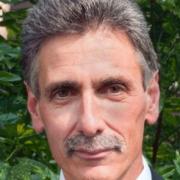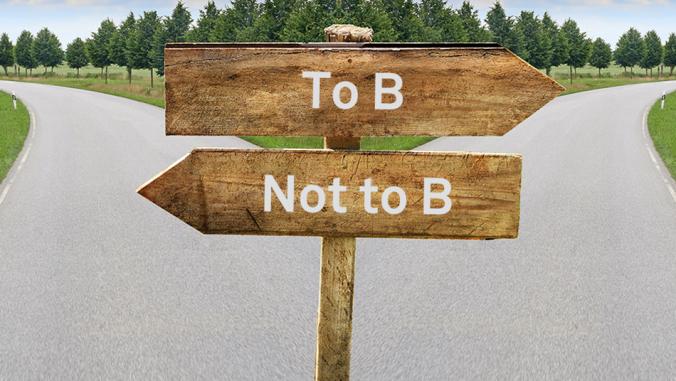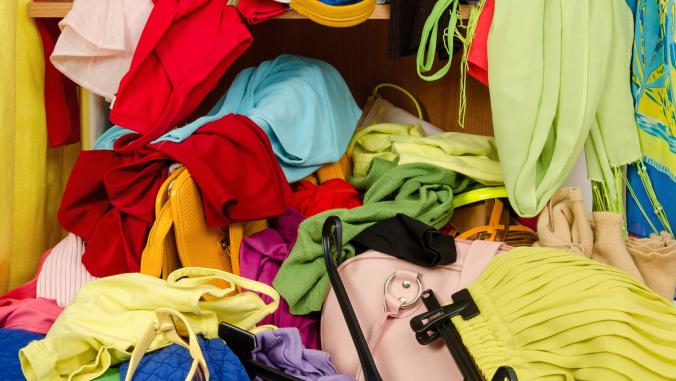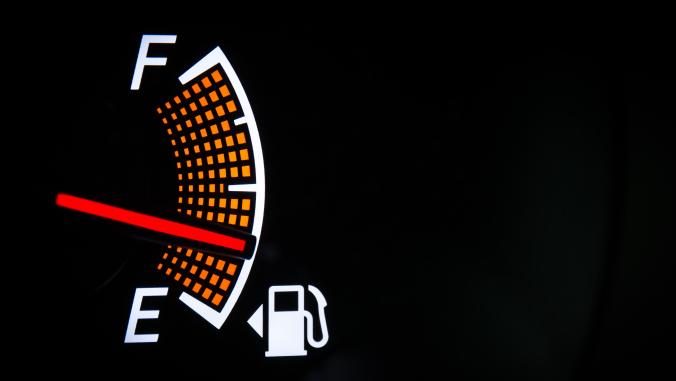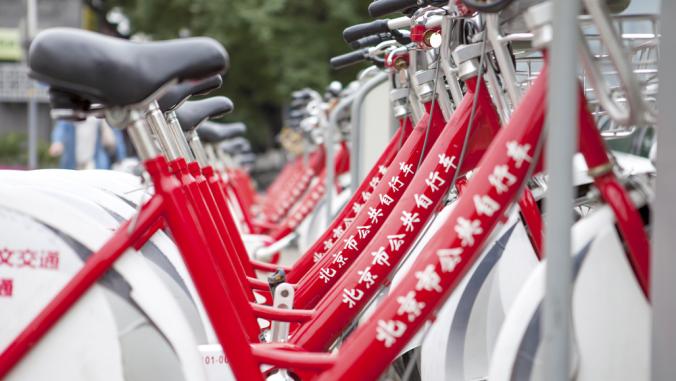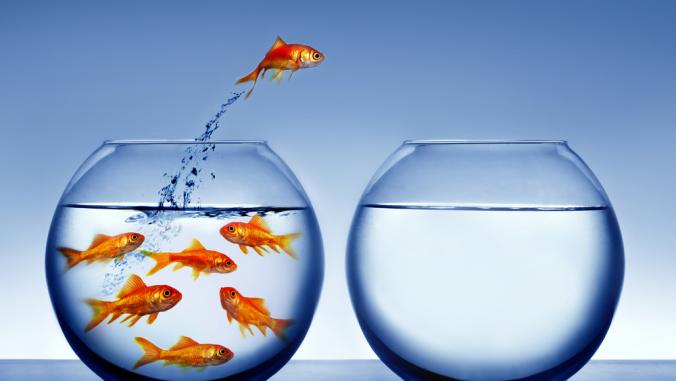The Power of One: Coca-Cola
<p>Bryan Jacob, energy and climate protection manager for Coca-Cola, is in charge of Coke's global effort to reduce the greenhouse gases that are emitted by the company's 10 million vending machines and coolers.</p>

"The Power of One" is a series of stories about people who have helped their companies become more sustainable. (See earlier stories on UL Environment, eBay, and Union Pacific.) They can't do it alone, of course. But by coming up with a good idea, enlisting the help of others and making persuasive arguments, one person can change a company and, sometimes, more. Today's story -- the last in the series, at least for now -- is about a manager at Coca-Cola who knows what it feels like to have the weight of the world on his shoulders.
Meet Bryan Jacob. Back in 1990, when he made the cover of Weightlifting USA, he was a 21-year-old student at Georgia Tech, hoping to represent the United States in Olympic Games. He did so, twice -- in Barcelona in 1992, when he finished 18th in the Featherweight division and in Atlanta in 1996, when he finished 8th in the Bantamweight competition. He was the top U.S. performer in his weight class both times. He's still fit -- with a firm handshake.
 It's a good thing that Bryan is accustomed to heavy lifting because his current job, as energy and climate protection manager for Coca-Cola, is a big one: He leads Coke's global effort to reduce the greenhouse gases that are emitted from the 10 million -- yes, 10 million! -- vending machines and coolers that are part of Coke's global bottling system. The company and its bottling partners have begun to replace coolers that use the most common refrigerants, hydrofluorocarbons (HFCs), which are also called fluorinated gases (F-gases), with so-called natural refrigerants such as CO2, propane or isobutane.
It's a good thing that Bryan is accustomed to heavy lifting because his current job, as energy and climate protection manager for Coca-Cola, is a big one: He leads Coke's global effort to reduce the greenhouse gases that are emitted from the 10 million -- yes, 10 million! -- vending machines and coolers that are part of Coke's global bottling system. The company and its bottling partners have begun to replace coolers that use the most common refrigerants, hydrofluorocarbons (HFCs), which are also called fluorinated gases (F-gases), with so-called natural refrigerants such as CO2, propane or isobutane.
Last year, the company and its bottling partners said they expected
that 100 percent of their new vending machines and coolers will be HFC-free by 2015. We're hopeful our aggregate demand will encourage supply as a means of accelerating the transition to HFC-free refrigeration equipment. This announcement is a direct result of work with Greenpeace that began in 2000.
Yes, that's right -- Coke's key partner on its journey to natural refrigeration is Greenpeace, which is better known for civil disobedience than corporate partnerships. "The Greenpeace relationship went from very confrontational to one of the most collaborative we have," Bryan says.
Bryan, in fact, says he's learned that NGO partners can deliver a lot of value when you are trying to ,spark change in a sprawling company like Coca-Cola. He's worked with Greenpeace, WWF, the World Resources Institute and even Dr. Rajendra K. Pauchari, the sometimes-controversial chairman of the Intergovernmental Panel on Climate Change. Bryan once brought "Pachy," as he's called, to speak with a convention of Coke bottlers in Boca Raton.
Like politics, the environmental movement can create strange bedfellows.
I emailed Amy Larkin, who leads business partnerships for Greenpeace, to ask about her work with Bryan and Coca-Cola. She replied:
Bryan Jacob is the kind of colleague everyone wishes they had. He is determined, indefatigable and inventive. Bryan is also open to new ideas -- even big crazy ideas that will require a huge amount of work to make real. Maybe those are his favorite ideas…….not sure.
Greenpeace has worked with Bryan for many years on HFC-free refrigeration and some of our meetings were rather difficult. Bryan's entire demeanor and way of working always encourage constructive engagement and he is a central ingredient in our successful outcome with Coca-Cola.
As it happens, Bryan is not one of those environmentalists who grew up green. He figured that he'd one day build dams, bridges, highways and airports, as he worked towards a degree in civil engineering. ("Most of the time, I'm civil," he jokes, "but when I get agitated I can get hostile.") Instead, he took a job during college with an environmental consulting firm, got excited about the field and then found his way to Coca-Cola.
This was 1993, three years before the Olympics were coming to Atlanta. Bryan got the job, in part, because Coke's sports marketing department had set aside budget to hire Olympic athletes. But he was assigned to work on refrigeration because the company was then undergoing an earlier transformation, away from ozone-depleting chlorofluorocarbons (CFCs) to hydrofluorocarbons (HFCs) which would not damage the ozone layer. This was a result of the global treaty known as the Montreal Protocol, which has succeeded in allowing the ozone layer to repair itself.
The trouble is, HFCs are potent greenhouse gases, thousands of times as potent as carbon dioxide. (HFC-134a, for example, a common refrigerant, has a global warming potential that is 1,430 times that of CO2.) While they currently have a relatively small aggregate impact on global warming, some people project that HFC emissions will represent 9-19 percent of projected greenhouse gas emissions in 2050.
"Almost as soon as we began converting to HFCs," Bryan recalls, "the environmental community started telling us that there was another alternative. Greenpeace in particular."
The challenge, since then, has been developing cost-effective alternatives to HFCs and persuading the bottlers across the vast Coca-Cola system to adopt. Like so many environmental issues where science and economics are intertwined, this is complicated. The company has had to develop new technology and cooperate with its competitors, at a time when there's no regulation of greenhouse gas emissions.
In Coke: The Green Thing, a long story about the company's sustainability efforts than ran on Fortune.com in 2008, I wrote this about the refrigeration work:
Coke has invested $40 million in research and testing, published a 900-page technical study and organized a coalition of companies that sell cold drinks and ice cream, including Unilever, McDonald's and (gasp!) PepsiCo., to attack the problem. Last year, at the World Economic Forum in Davos, Coke declared victory: E. Neville Isdell, the company's chairman and CEO, and Gerd Leipold, who leads Greenpeace, unveiled a new, HFC-free, super-efficient vending machine. About 8,000 of the climate-friendly machines have been deployed, most to high-profile venues like Davos and the 2008 Summer Olympics in Beijing.
..But HFCs are still being used as a coolant in nearly all coolers and vending machines because the alternative developed by Coke and others -- a coolant that uses carbon dioxide -- is more expensive. It requires retooling the industry, with no direct payback.
Since then, Bryan tells me, Coca-Cola has rolled out another 220,000 units of HFC-free equipment. That's progress, but it's a long way from 10 million. By working with a coalition called Refrigerants, Naturally! to stimulate more demand for the HFC-free equipment, Coca-Cola hopes to bring prices down.
As if that weren't enough, Bryan is also focused on driving energy efficiency in the system's manufacturing plants around the world and in exploring more energy-efficient, low-carbon distribution options for Coke and its bottlers' fleets.
I asked Bryan what he'd learned from more than a decade of working on climate and energy issues inside the world's largest beverage company. Here's what he told me:
First, collaboration with NGOs is valuable. "Nothing is accomplished by an individual," he says." "It's always a team effort." He took WWF officials on a road show to visit Coke's seven largest bottlers around the world, and helped organize "greenhouse gas mitigation strategy workshops" for the bottlers. He brought in Jonathan Pershing, then of the World Resources Institute, now a top climate negotiator for the government, to explain how climate change might affect Coke, and how Coke could contribute to solving the problem. Interestingly, even though Coke's CEO, Muhtar Kent, and his predecessor, Neville Isdell, have been visible environmental advocates, they needed outside experts to help them make the case.
Second, set ambitious targets and don't be afraid to fail. The company has said it will grow its business, but not its greenhouse gas emissions, throughout the system and it has promised to cut absolute emissions in the developed world (Annex I countries, in UN-speak) by 5 percent from a 2004 baseline by 2015. "Transparency and disclosure and committing yourself to targets are the hallmarks of any leading company," Bryan says. Setting hard-to-achieve targets spurs innovation.
And if the company fails to meet its goals? Bryan says he hopes that "we will be rewarded for what we do achieve, rather than criticized for what we don't."
His experience as an Olympic athlete taught him to reach for a big goal, and then feel good if you've worked hard to achieve it. "I didn't win a medal," he says. "I finished ninth. Does that mean I'm a loser. No. I'm a winner."
Hard to argue with that, whether we're taking sports or weightier matters.
